
First and Only Weekly Online Fanzine Devoted to the Life and Works of Edgar Rice Burroughs Since 1996 ~ Over 5,000 Webpages and Webzines in Archive |

First and Only Weekly Online Fanzine Devoted to the Life and Works of Edgar Rice Burroughs Since 1996 ~ Over 5,000 Webpages and Webzines in Archive |
"Nkima scolded and chattered from the safety of his master's shoulder ..." (Invincible)
 |
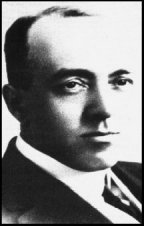
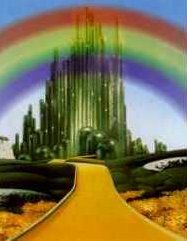
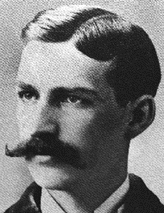
![]()
A R T I C L E
_________________________________
C H A T T E R I N G FROM THE
SHOULDER #4
The Wizards of California:
Baum & Burroughs
By David Adams
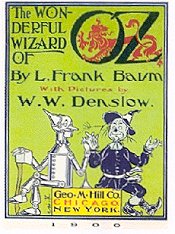
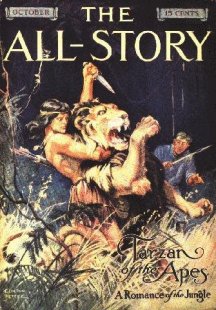
As a long-time Edgar Rice Burroughs fan I have known for years that he was a good friend of the writer of the Oz series, L. Frank Baum. The basic facts of the matter are well-presented by John Taliaferro, the writer of the controversial new biography of Burroughs called, "Tarzan Forever.""Also that winter (1916) Burroughs struck up a friendship with L. Frank Baum, a former Chicagoan and the author of "The Wonderful Wizard of Oz," "The Road to Oz," "The Scarecrow of Oz," and other books in the popular series. Baum had moved to the new suburb of Hollywood in 1910 and, like Burroughs, was determined to have his tales adapted to the movies. That year, William Selig had made a hand-colored one-reeler of "The Wizard of Oz." Then in 1914, Baum had formed his own studio, the Oz Film Manufacturing Company, though the venture had failed after only five films. By the time he met Burroughs -- perhaps through Selig -- Baum had already completed a full cycle of successes and hard knocks, and he was all too willing to share his insight with an inexperienced fellow Chicagoan nearly twenty years his junior. The two men apparently got along well, for Baum invited Burroughs to join the prestigious men's club he had founded, the Uplifters, which Burroughs described as a "select group of millionaires, clerks, and other celebrities, all members of the Los Angeles Athletic Club, who meet weekly for luncheon and occasionally evenings for dinner and have a heck of a good time." (Baum died in 1919, two decades before MGM, the studio that also made the best and most profitable Tarzan movies, released its classic version of "The Wizard of Oz," starring Judy Garland.)
I have always found it interesting that these two writers of fantasy, which is appreciated by both children and adults, were such close friends. I have often wondered how they may have influenced one another in their writings.
Frank Baum was extremely popular when he met Burroughs. Ed noted that "He gets about a hundred and fifty letters a week from kids and answers them all long-hand." It's amazing that he found time to write more books at all.
When the two writers first met in 1916, Burroughs had only written five of his 25 Tarzan books, and he set about writing an unusual (for him) series of short stories about Tarzan's childhood called "The Jungle Tales of Tarzan," which perhaps reflects a nod to the children's market inspired by his new friendship. Of course, Burroughs was wildly popular in his own right by then, and so any ideas he may have gotten from Baum would most likely have come in the nature of marketing rather than characters or plot. Ed was always on the lookout for another way to make a buck.
"The fourteen volumes of the "Oz" series are full of wonderful inventions. Baum was the Edison of narrative fantasy, finding ways of lighting it up and making it talk that no one had ever thought of before. The product of his two decades of tinkering are an often ill-written but always pleasing jumble of effects. "The Marvelous Land of Oz," (1904) followed "The Wizard" (1900), with "Ozma of Oz,: "Dorothy and the Wizard in Oz," "The Road to Oz," and "The Emerald City of Oz" appearing annually from 1907 to 1910. In this last fantasy Baum tried to turn a circular journey into a closed one by declaring Oz forevermore invisible and thus inaccessible to its chronicler, but popular demand led him to resume his annual production in 1913 with "The Patchwork Girl of Oz." "Tik-Tok of Oz" followed, and then "The Scarecrow of Oz," "Rinkitink in Oz," "The Lost Princess of Oz," "The Tin Woodman of Oz," "The Magic of Oz," and "Glinda of Oz." I cite them all to suggest how spendthrift were Baum's powers of imagination, and also how hastily he wrote, for even these fourteen novels are but a fraction of his output for children in this period." (Goldthwaite, John: The Natural History of Make-Believe).
Goldthwaite goes on to point out that "Plots notwithstanding, this is what Oz is really all about -- wayfaring in a new land. The pleasure of being there is the thing, and bumping into new and wonderful characters," which is certainly a characteristic of Burroughs' novels as well.
"A walker in this enchanted land will make the acquaintance of many fellow travelers and find them the friends of his need. That is what they are there for, of course. They are the helpers from the old fairy tales, now Americanized into Scarecrows, Tin Men, Tik-Toks, Highly Magnified Wogglebugs, and Johnny Do-its. Through them the books do create a genuine feeling of gladness."
I think I'll open the covers of some of these tales by Baum. Many of them are available at reasonable prices in paperback editions from Dover although like the books by Burroughs the first editions are expensive collector's items. My copy of "The Wizard of Oz" is actually "The New Wizard of Oz" published by Bobbs-Merrill in 1944. Upon the fly leaf is my mother's inscription, "Merry Christmas David -1946." I was five years old.
It may be a stretch of the imagination to see Flying Monkeys in the Wieroos, which Burroughs invented for his Out of Time's Abyss, which he began writing in May of 1918. however they were both flying carriers of their respective characters into strange lands. The naughty monkeys dropped the Tin Woodman onto the rocks, pulled the Scarecrow apart, and carried the bound Lion to a cage, but they did carry Dorothy safely because she had a mark on her forehead.
Robert R. Barrett sees an early influence of Baum on Burroughs in his "Minidoka, 937th. Earl of One Mile Series M." He writes, "Why else would he have subtitled this story 'An Historical Fairy Tale?" referring to Baum's introduction to "The Wonderful World of Oz" in which he wrote:
"Folklore, legends, myths and fairy tales have followed childhood through the ages, for every healthy youngster has a wholesome and instinctive love for stories fantastic, marvelous and manifestly unreal. The winged fairies of Grimm and Andersen have brought more happiness to childish hearts than all other human creations. Yet the old-time fairy tale, having served for generations, may now be classed as 'historical' in the children's library; for the time has come for a series of newer 'wonder tales' in which the stereotyped genie, dwarf and fairy are eliminated, together with all the horrible and blood-curdling incidents devised by their authors to point a fearsome moral to each tale. Modern education includes morality; therefore the modern child seeks only entertainment in its wonder-tales and gladly dispenses with all disagreeable incidents. Having this thought in mind, the story of 'The Wonderful Wizard of Oz' was written solely to please children of to-day. It aspires to being a modernized fairy tale, in which the wonderment and joy are retained and the heart-aches and nightmares are left out." (L. Frank Baum. Chicago, April, 1900.)
Of course, all the nightmares have not been left out, and "The Wonderful Wizard of Oz" is filled with its abundant share of blood-curdling incidents, which are necessary to create a timeless fairy tale.
There are flying monkeys in Minidoka. When Minidoka, Bodine, and Rhi visit Nevaeh ("heaven" spelled backwards) it is a yawning abyss leading to the center of the Earth. Here they meet Tnias Retep (a reverse Saint Peter) who introduces them to Anthropop, the father of monkeys, (Ape-Adam) who had been in Nevaeh so long that he knew more about it and all the animals there than anyone else. This Adam is now a winged monkey who had worked up to the seventh cube and had earned his angel wings. He acts as a Virgil-guide in this Hell for animal abusers, who are punished by the very animals they were cruel to while on Earth.
"Til every snarling skull, with moans, And ghastly groans, each sin atones."
Fish catch the humans who caught them on Earth and tear the hooks from their cheeks. Hunters are the hunted. Dogs kick half-starved men who return to lick the paw that bruised them. "Down one great avenue fled the shades of a thousand-thousand-thousand women pursued by the beasts and birds whose furs and feathers had bedecked the women on Earth." Maybe we aren't so far from Caspak and the Wieroos after all.
The amazing thing about Minidoka is the fact that it is kind of an Ur-text or a primitive template from which all of his subsequent stories are drawn. It might just be a line here or a line there, but it all sounds strangely familiar.
The End
Be sure to visit our
ERB Contemporaries Feature:

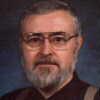
David Adams
Nkima and his friend, David Adams, would like to hear from ERB fans
davidadams@willmar.com

 |
 |
 |
 |
 |
 |